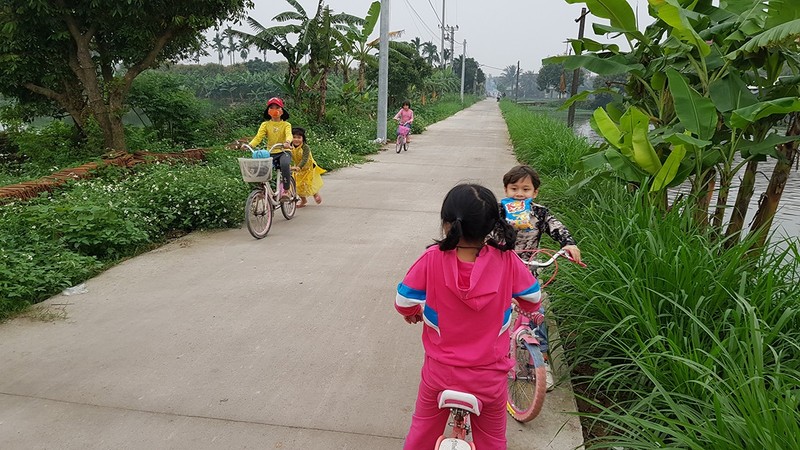Such episodes have coincided with the National Assembly’s adoption of a resolution on the programme to build new rural areas for the 2021-2025 period.
The streams of people returning to their rural homes reminded many of the wartime years when the countryside was the place where generations of city residents were evacuated to and where they lived, worked and studied as their cities became the targets of bombing raids by the enemies.
For most Vietnamese, the countryside is not only where they were born and grew up, but also a peaceful place to go back to during the Lunar New Year and on other important days as well as during times of failure and difficulty.
The frantic pace of urbanisation and industrialisation has disturbed life in the rural areas. Along with the rise of handsome new houses are the ponds and canals blackened by wastewater.
TVs, motorbikes, internet and electronic devices have now become commonplace in most homes but family tradition is fading away. When concrete roads replaced dirt roads and brick walls replaced simple fences, the relationship between villagers became less close-knit. The two sides of development that exist concurrently make us feel both happy and worried.
What is the right path for rural development so as to promote the positive and minimise the negative? The answer is building new rural areas. The set of criteria for new rural areas has outlined the direction of rural development in the new period. For more than ten years, the programme has brought about fruitful results that have transformed the face of the Vietnamese countryside.
But life is always changing and demands increasingly varied requirements. Even for localities that have fulfilled all the criteria of the programme, it seems to be not enough.
Minister of Agriculture and Rural Development Le Minh Hoan once said besides creating the “bone”, that is , investing in infrastructure so that rural residents can access urban-like utilities, it is necessary to safeguard and promote the “soul” that has been shaped over a thousand years. It must be considered a resource for rural development.
The programme to build new rural areas for the 2021-2025 period, which will be provided with huge resources and will cover every part of the country, is expected to further enhance the material and spiritual life of rural residents. In addition to infrastructure, raising their incomes and creating a healthy environment will be paid special attention as part of the programme.
Increasing incomes for rural residents in a sustainable way is no easy task but it can be achieved if Vietnam pushes ahead with agricultural restructuring by employing science and technology in new agricultural models which link production with post-harvest storage, processing and market development.
A matter that needs a great deal of effort to resolve is creating a modern living environment without losing cultural values and traditional ways of life so that the countryside can be a truly liveable and desirable place to return to.
The solution, as well as the age-old lesson, is to evoke and promote the people’s strength and their rights to mastery, with three inseparable pillars: building new rural areas as a fundamental task, restructuring agriculture as the foundation and farmers as the centrepiece.
















